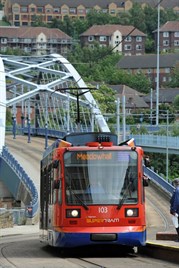 Read the peer reviews for this feature.
Read the peer reviews for this feature.
Download the graphs for this feature.
Ever since 1846, when Brunel’s 7ft ¼in gauge butted up to Stephenson’s 4ft 8½in railway, the need for standards has been self-evident. Indeed, the railway was among the first examples of technical standards emerging from an industrial revolution. Many would argue it accelerated such a revolution - the railway was, after all, the trigger for standard UK time (first known as Railway Time in 1840).
From such noble heritage it is therefore bizarre that today standards in rail are too often perceived as inhibitors of efficiency and innovation (see Panel 1). So what is myth; what is reality? Most importantly, what should be done in the standards arena to promote a safe and efficient railway?
In my experience, the need for standards is not questioned. However, the role of standards is sometimes confused, and so is a good place to start the debate. From here, outlining the standards landscape, exploring how standards are set (and by whom), and how standards are used (and misused!) informs the discussion. For the experienced this may be well-trodden ground, but for others, including newcomers to the industry (of which I am one of many), it is an essential precursor to debate - especially now that the ground is shifting as Europe introduces a changing landscape.
A good starting point is The Industry Standards Group report prepared in response to the Infrastructure Cost Review for Treasury, chaired by Institution of Civil Engineers past president Peter Hansford.
“A Standard can be defined as an agreed, repeatable way of doing business. It is a published document that contains a technical specification or other precise criteria designed to be used consistently as a rule, guideline or definition. Standards help to make life simpler and to increase the reliability and effectiveness of many goods and services we use.”
The report goes on to note: “Throughout Sir Roy McNulty’s recent rail industry Value for Money review, it seemed that some of the most senior people in industry and government believed that standards exist solely for the purpose of managing safety, and that standards are the sole means by which safety is managed. In practice, safety is only one of the outcomes that standards seek to deliver; and beyond standards, there are many other facets to safety management. Each type of standard exists for a purpose, which is not delivered by other types of standard.”
So, standards are not “safety standards”. Standards are part of a framework that provide a reliable and efficient railway, and allow it to operate as an integrated system (see Panel 2, page 32). The role of standards is for the design, operations and management of the railway system to ensure: compatibility at the interfaces of the railway systems; opening of the market, so that manufacturers can design with confidence; standardisation of particular solutions which reflect good practice (these tend to be generally voluntarily adopted, and are not imposed).











